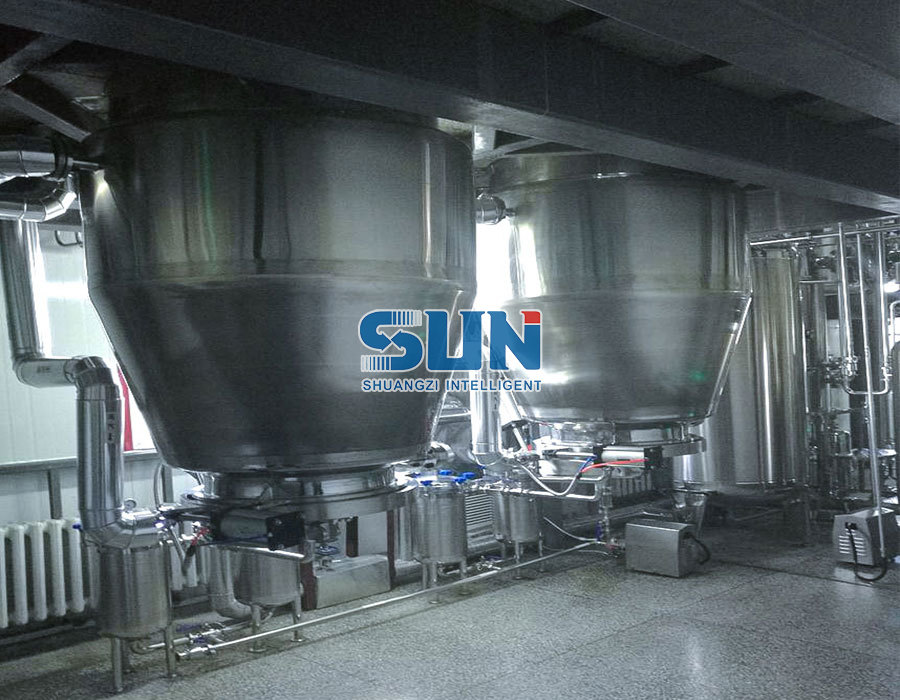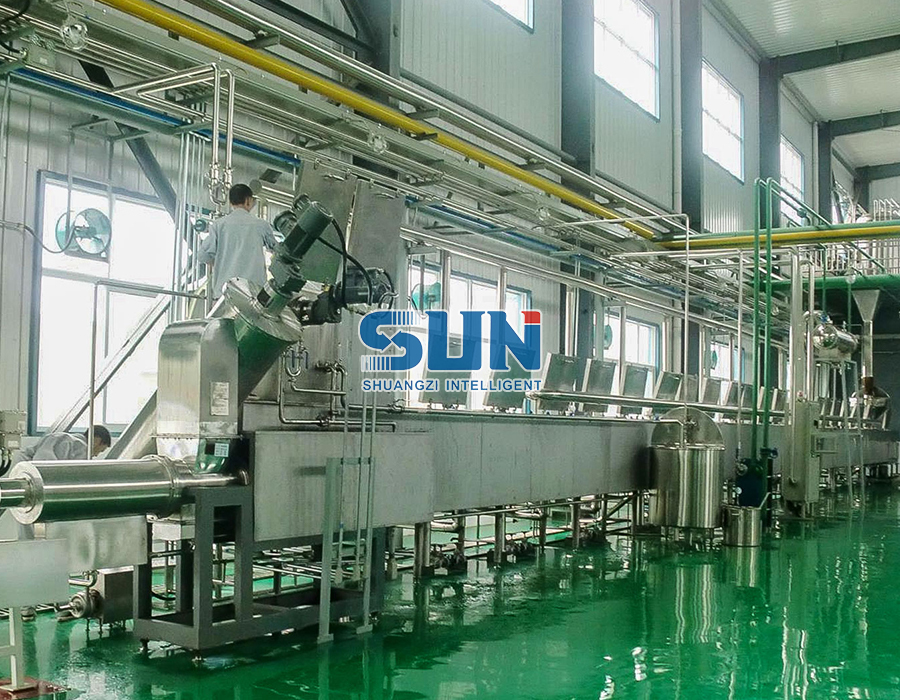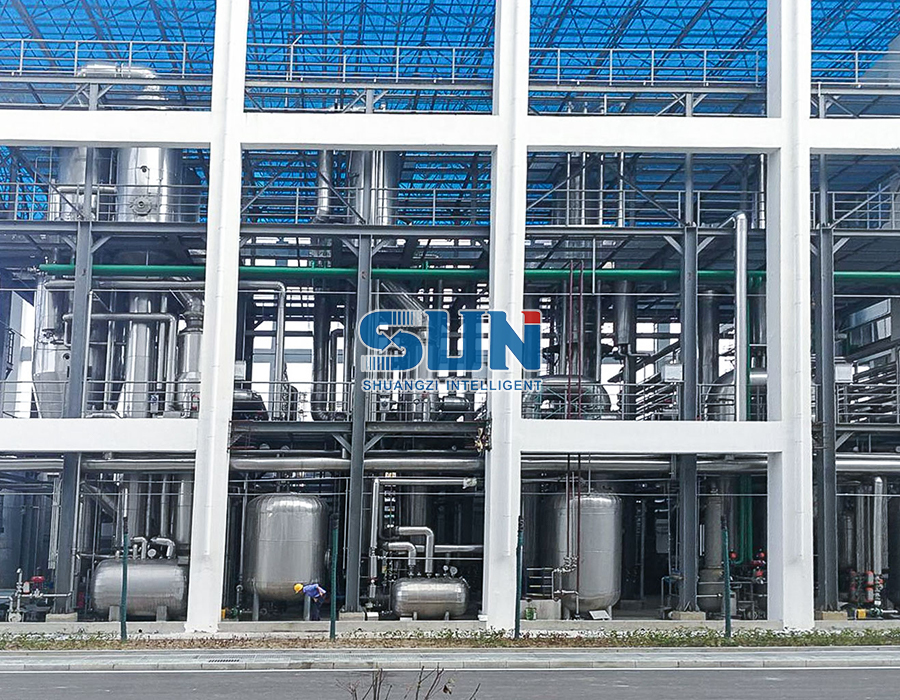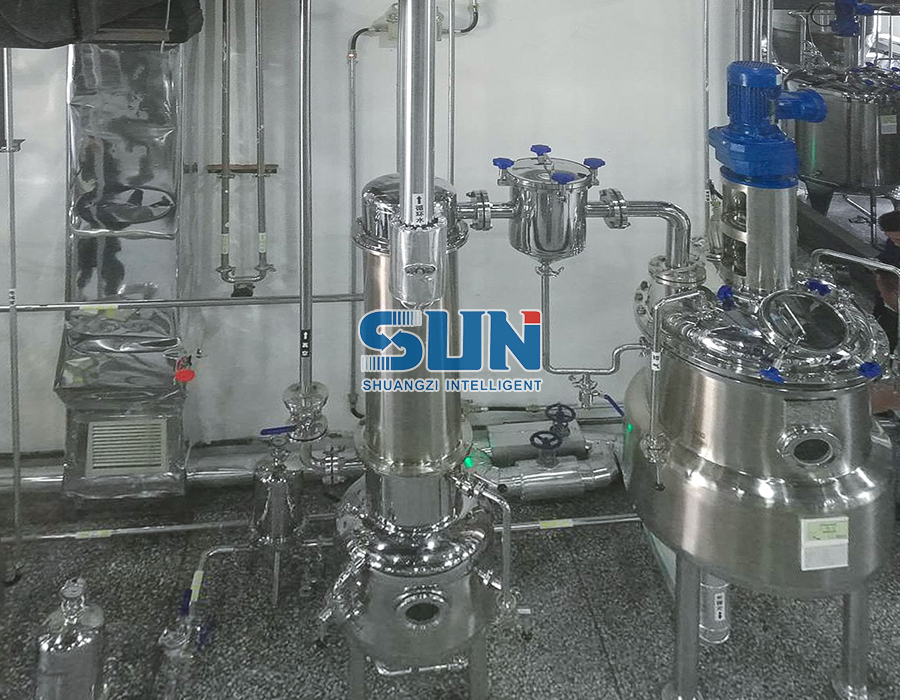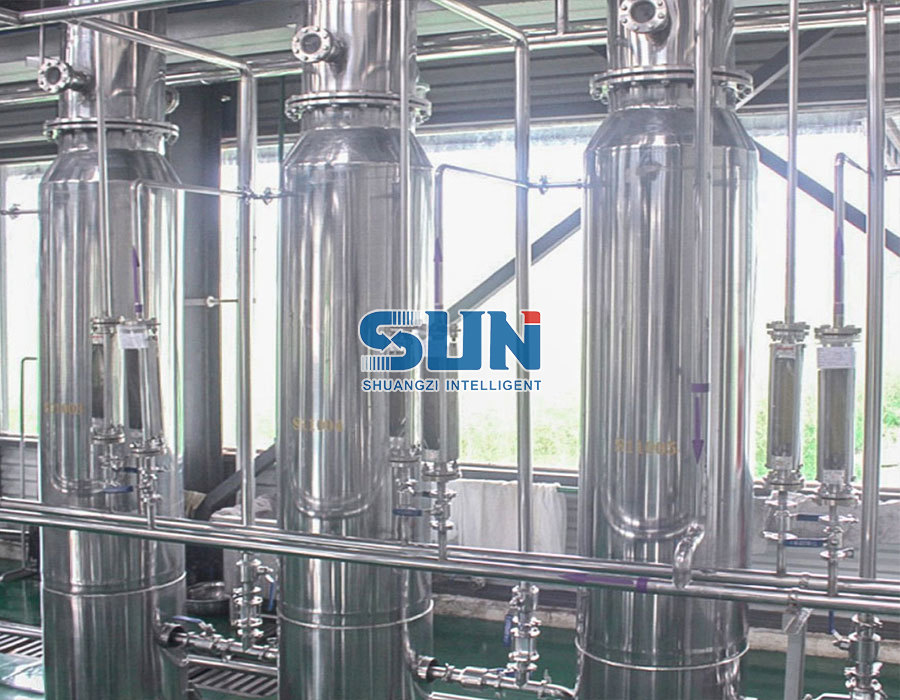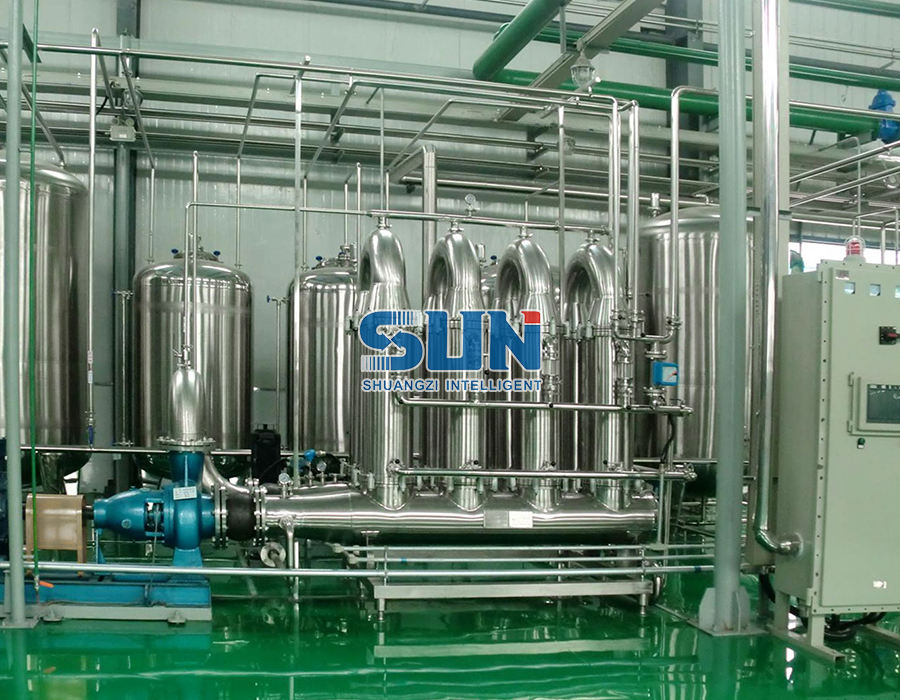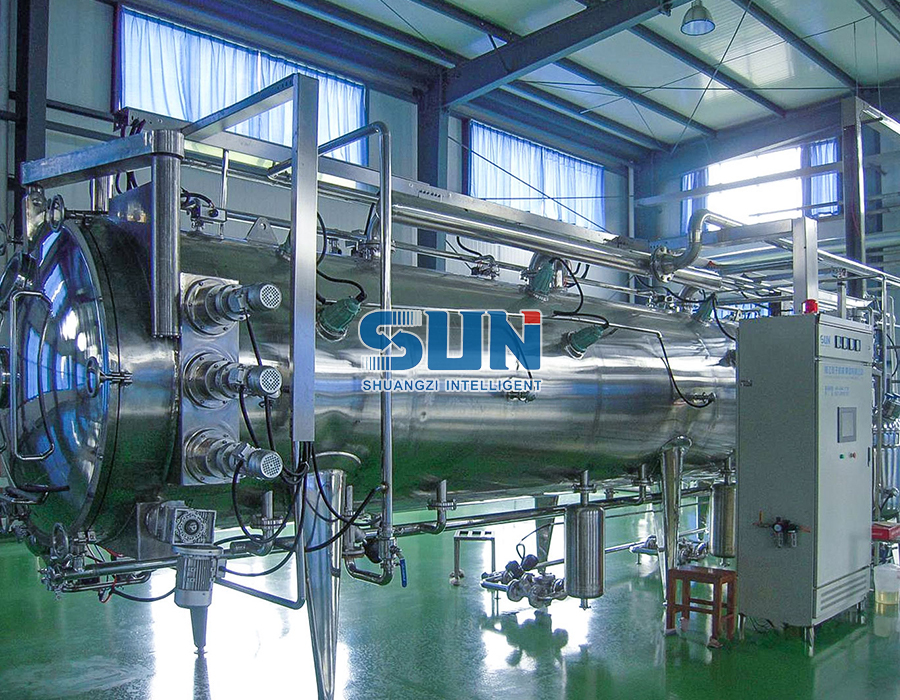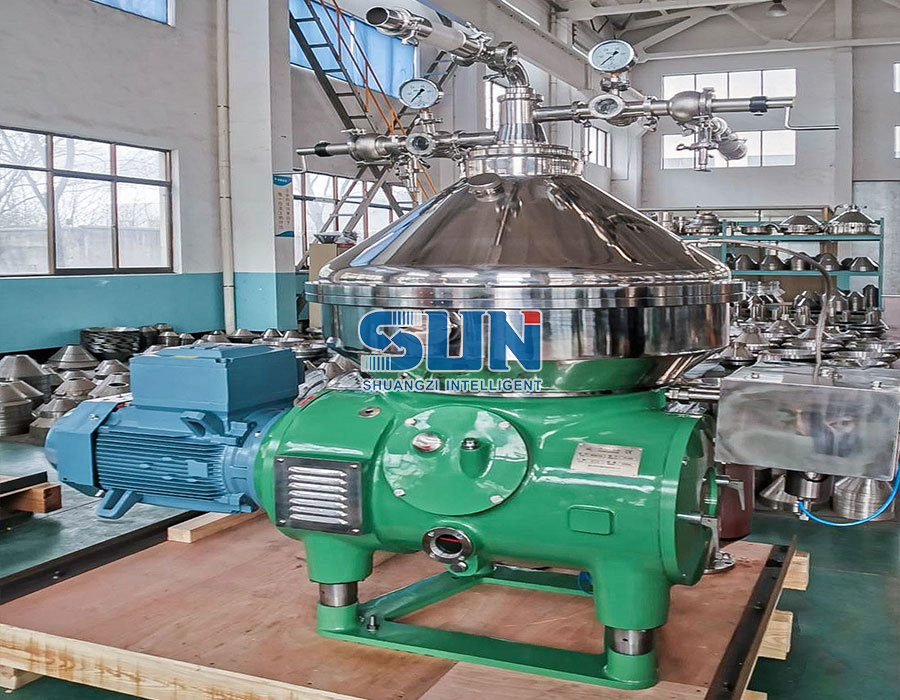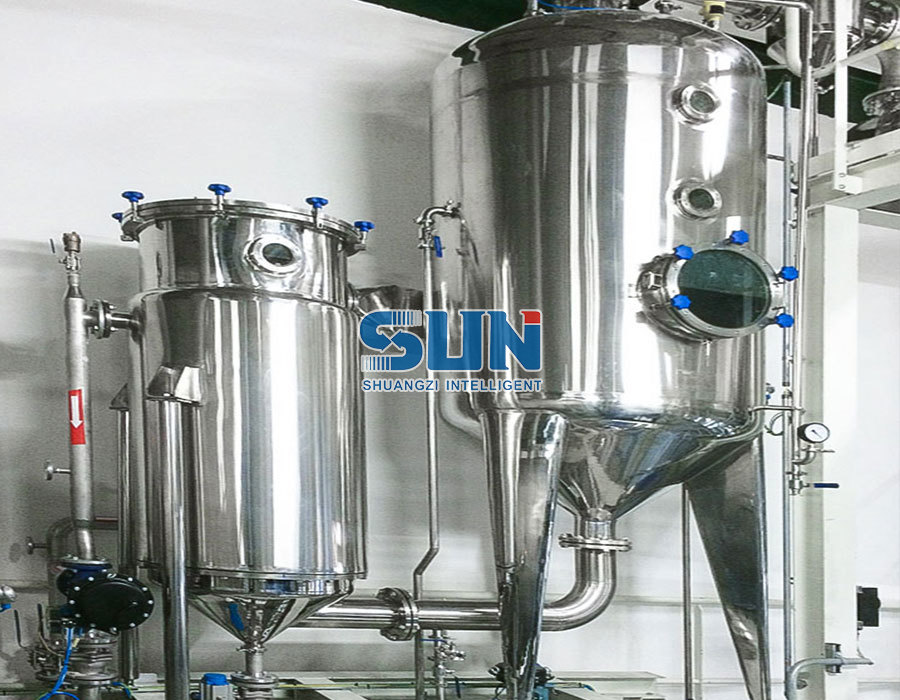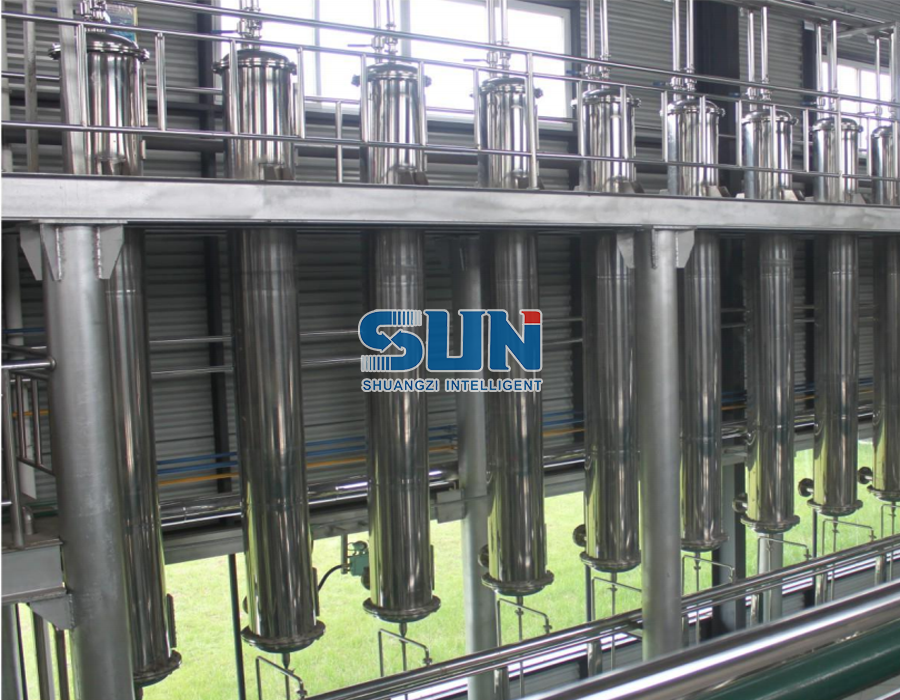When using a fall film evaporator for the evaporation process, it is crucial to consider energy efficiency. Reasonable energy utilization can not only improve process effects, but also bring significant energy-saving benefits. This article will introduce you to the energy efficiency points to consider when using falling film evaporators to help you achieve more efficient process operations and energy utilization.
Optimizing heat source selection is key to improving the energy efficiency of a fall film evaporator. Choosing a suitable heat source can provide a stable heat supply and be able to meet the heat demand of the evaporation process. Common heat sources include steam, hot water, and thermal oil. When selecting a heat source, factors such as energy consumption, heating efficiency, and environmental impact need to be considered to achieve the best energy utilization effect.
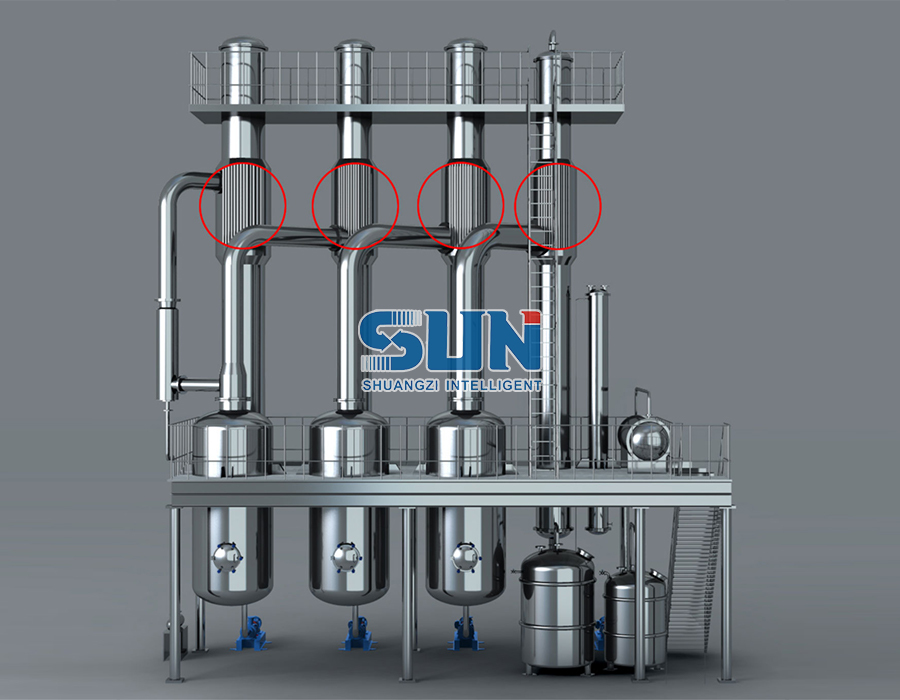

Reasonable design and optimization of the structure and operating parameters of the fall film evaporator are important measures to improve energy efficiency. For example, the size and shape of the evaporator should be properly selected to maximize heat utilization and increase the heat transfer surface area. At the same time, the evaporator feed rate and temperature are controlled to avoid overfeeding and energy waste. In addition, an advanced control system is used to adjust operating parameters based on real-time data to achieve more precise energy control and optimization.
Recycling waste heat and waste water is an important strategy to improve energy efficiency. During the falling film evaporation process, waste heat and waste water are usually generated. Through reasonable heat recovery and water recovery systems, waste heat and waste water can be reused, reducing energy waste and environmental pollution. This includes using waste heat for preheating or generating electricity, and using wastewater for reuse or recycling.
When using a fall film evaporator, considering energy efficiency is key to achieving efficient process operations and energy savings. Optimizing heat source selection, rationally designing and optimizing evaporator structure and operating parameters, and recycling waste heat and waste water are all important points to improve energy efficiency. By taking these factors into consideration, we can achieve more efficient process operations while maximizing energy savings and protecting the environment.


 英语
英语 俄语
俄语